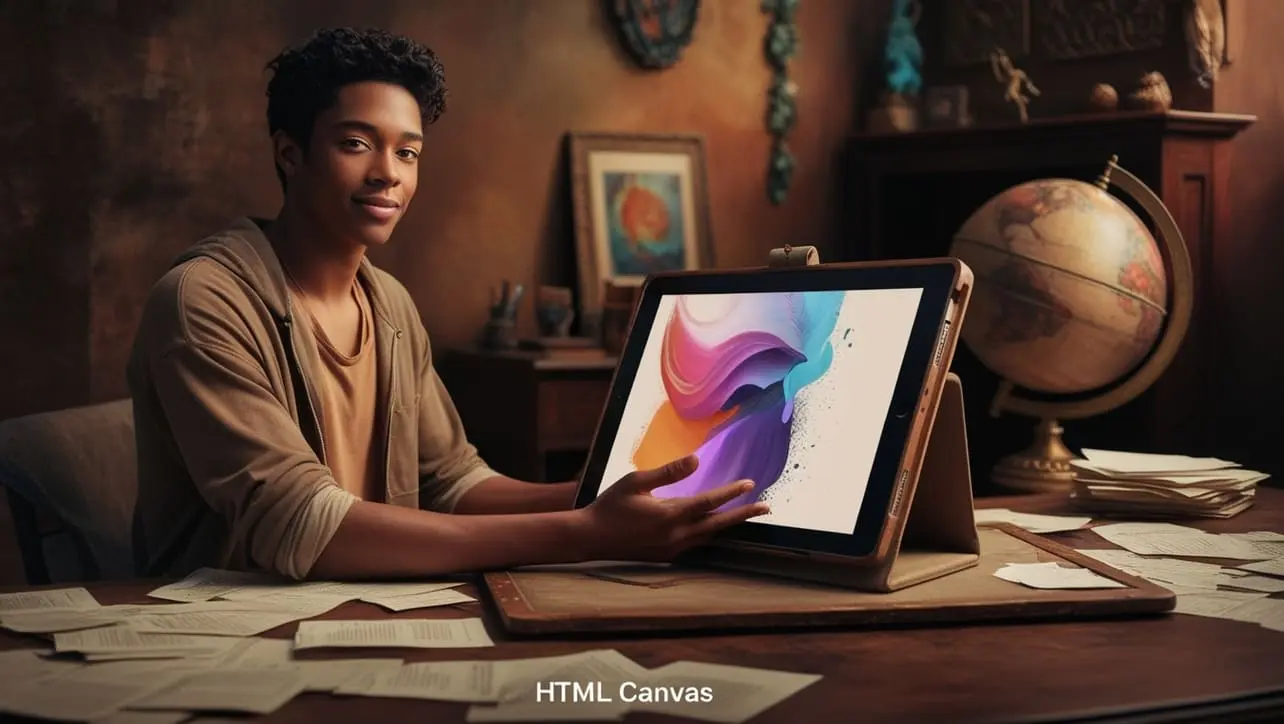
HTML Topics
- HTML Intro
- HTML Basic
- HTML Editors
- HTML CSS
- HTML Tags
- HTML Deprecated Tags
- HTML Events
- HTML Event Attributes
- HTML Global Attributes
- HTML Attributes
- HTML Comments
- HTML Entity
- HTML Head
- HTML Form
- HTML IndexedDB
- HTML Drag & Drop
- HTML Geolocation
- HTML Canvas
- HTML Status Code
- HTML Language Code
- HTML Country Code
- HTML Charset
- MIME Types
HTML Multimedia

Photo Credit to CodeToFun
🙋 Introduction
HTML Multimedia refers to the integration of audio, video, and other interactive elements into web pages.
HTML5 introduced native support for multimedia elements, allowing developers to embed and control media without relying on external plugins. This enhances the user experience by providing seamless integration and better performance across different devices.
🤷 What Is HTML Multimedia?
HTML Multimedia involves using HTML elements to embed and control media content such as audio and video files directly within web pages. This is achieved using the <audio> and <video> elements, which provide a standard way to handle media files, enhancing compatibility and usability across different browsers and devices.
🎧 HTML5 Audio
The <audio> element in HTML5 is used to embed sound content in web pages. It supports various audio formats including MP3, WAV, and Ogg. The element can be controlled through attributes and methods, offering a range of functionalities for playing, pausing, and managing audio playback.
Basic Syntax:
<audio controls></audio>
<source src="audiofile.mp3" type="audio/mpeg">
Your browser does not support the audio element.
</audio>Attributes
- controls: Displays the default audio controls (play, pause, volume).
- autoplay: Starts playing the audio as soon as it's ready.
- loop: Repeats the audio once it ends.
- muted: Mutes the audio.
📝 Example
<audio controls></audio>
<source src="example.mp3" type="audio/mpeg">
Your browser does not support the audio element.
</audio>📹 HTML5 Video
The <video> element is used to embed video content in web pages. It supports multiple video formats including MP4, WebM, and Ogg. Similar to the <audio> element, it offers controls for playing, pausing, and managing video playback.
Basic Syntax:
<video width="640" height="360" controls></video>
<source src="videofile.mp4" type="video/mp4">
Your browser does not support the video tag.
</video>Attributes:
- controls: Displays the default video controls (play, pause, volume, fullscreen).
- autoplay: Starts playing the video as soon as it's ready.
- loop: Repeats the video once it ends.
- muted: Mutes the video.
- poster: Specifies an image to show before the video starts playing.
📝 Example:
<video width="640" height="360" controls></video>
<source src="example.mp4" type="video/mp4">
Your browser does not support the video tag.
</video>🎥 Embedding External Multimedia
In addition to native HTML5 elements, you can embed multimedia content from external sources using iframes or embed tags. This is useful for integrating content from services like YouTube or Vimeo.
📝 Example (YouTube Embed):
<iframe width="560" height="315" src="https://www.youtube.com/embed/dQw4w9WgXcQ" frameborder="0" allow="accelerometer; autoplay; clipboard-write; encrypted-media; gyroscope; picture-in-picture" allowfullscreen></iframe>♿ Accessibility Considerations
When integrating multimedia content, it’s important to ensure accessibility for all users. This includes:
- Providing text alternatives for audio and video content (e.g., captions, transcripts).
- Ensuring that controls are accessible via keyboard and screen readers.
- Using appropriate HTML attributes and ARIA roles to enhance accessibility.
📝 Example of Subtitles:
<video width="640" height="360" controls></video>
<source src="example.mp4" type="video/mp4">
<track src="subtitles_en.vtt" kind="subtitles" srclang="en" label="English">
Your browser does not support the video tag.
</video>🏆 Best Practices
- Optimize Media: Use appropriate formats and compress media files to improve loading times and performance.
- Test Across Devices: Ensure multimedia content works across different browsers and devices.
- Provide Controls: Always include controls for users to manage playback.
- Consider Performance: Use media in a way that does not adversely affect page load times and user experience.
📝 Example
Here’s a simple example combining both audio and video elements:
<!DOCTYPE html>
<html>
<head>
<title>HTML Multimedia Example</title>
</head>
<body>
<h1>HTML Multimedia Example</h1>
<h2>Audio Example</h2>
<audio controls>
<source src="audiofile.mp3" type="audio/mpeg">
Your browser does not support the audio element.
</audio>
<h2>Video Example</h2>
<video width="640" height="360" controls>
<source src="videofile.mp4" type="video/mp4">
Your browser does not support the video tag.
</video>
<h2>Embedded YouTube Video</h2>
<iframe width="560" height="315" src="https://www.youtube.com/embed/dQw4w9WgXcQ" frameborder="0" allowfullscreen></iframe>
</body>
</html>🎉 Conclusion
HTML Multimedia provides powerful tools for embedding and controlling audio and video content directly within web pages. By understanding and utilizing the <audio> and <video> elements, as well as embedding external multimedia, you can create rich, engaging web experiences. Ensuring accessibility and following best practices will help deliver high-quality multimedia content to all users.
👨💻 Join our Community:
Author

For over eight years, I worked as a full-stack web developer. Now, I have chosen my profession as a full-time blogger at codetofun.com.
Buy me a coffee to make codetofun.com free for everyone.
Buy me a Coffee












If you have any doubts regarding this article (HTML Multimedia), please comment here. I will help you immediately.